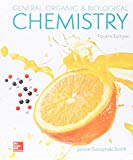
Concept explainers
(a)
Interpretation:
The comparison between C=O and C=C with respect to geometry is to be explained.
Concept Introduction:
A double bond is said to be formed between two atoms when these atoms share two electrons to form a covalent bond. The hybridization of doubly bonded carbon atom is sp2 and the shape is trigonal planer. The geometry of a molecule refers to the three dimensional arrangement of the atoms constituting the given molecule.
(b)
Interpretation:
The comparison between C=O and C=C with respect to polarity is to be explained.
Concept Introduction:
A double bond is said to be formed between two atoms when these atoms share two electrons to form a covalent bond. The hybridization of doubly bonded carbon atom is sp2 and the shape is trigonal planer. The bond polarity refers to the accumulation of the electron density towards one end which is more electronegative thus, causing the more electronegative end to carry slightly more negative charge, while the other end from which the withdrawal of electron density takes place carry a little positive charge.
(c)
Interpretation:
The comparison between C=O and C=C with respect to type of reaction is to be determined.
Concept Introduction:
Functional group refers to the atoms or small group of atoms that can exhibit characteristic reaction when treated with certain chemical reagents. A particular functional group will always show a characteristic chemical behavior when present in different compounds.
Want to see the full answer?
Check out a sample textbook solution
Chapter 16 Solutions
Loose Leaf for General, Organic and Biological Chemistry with Connect 2 Year Access Card
- Identify the major product for each of the following El reactions: ? он ? EIOH Heat Br conc. H,SO, Нeat (b) OH Br conc. H,SO,, 2 Heat ? EIOH Heat (c) (d)arrow_forwardDraw the structures corresponding to each letter.arrow_forwardGive the IUPAC names pls include cis and trans, and which is more stablearrow_forward
- Draw all the alcohol having the formula C5H12Land which are choralarrow_forwardGive the IUPAC name of the following compoundsG AND H ONLYarrow_forward2 SUPERMARKET23 4 Essay Writing Ser. G calculator - Googl. A Gflights b BATERBLY C CHEGG > KATAPULK CUBA O Maps a AMAZON A Translate Question 6 of 21 Which of the following best describes why only small aldehydes and ketones are soluble in water? A) low molar mass aldehydes and ketones can hydrogen bond through the carbonyl oxygen to water. B) High molar mass aldehydes and ketones have boiling points that are too high to be soluble in water. C) low molar mass aldehydes and ketones hydrogen bond with one another to be soluble in water. D) low molar mass aldehydes and ketones have low boiling points that enhance solubility in water. MacBook Pro 23 2 3 4 7 8 W E R Y F G H. J K Tarrow_forward
 Chemistry for Today: General, Organic, and Bioche...ChemistryISBN:9781305960060Author:Spencer L. Seager, Michael R. Slabaugh, Maren S. HansenPublisher:Cengage Learning
Chemistry for Today: General, Organic, and Bioche...ChemistryISBN:9781305960060Author:Spencer L. Seager, Michael R. Slabaugh, Maren S. HansenPublisher:Cengage Learning
 Chemistry: Principles and ReactionsChemistryISBN:9781305079373Author:William L. Masterton, Cecile N. HurleyPublisher:Cengage Learning
Chemistry: Principles and ReactionsChemistryISBN:9781305079373Author:William L. Masterton, Cecile N. HurleyPublisher:Cengage Learning Chemistry: Principles and PracticeChemistryISBN:9780534420123Author:Daniel L. Reger, Scott R. Goode, David W. Ball, Edward MercerPublisher:Cengage Learning
Chemistry: Principles and PracticeChemistryISBN:9780534420123Author:Daniel L. Reger, Scott R. Goode, David W. Ball, Edward MercerPublisher:Cengage Learning Chemistry by OpenStax (2015-05-04)ChemistryISBN:9781938168390Author:Klaus Theopold, Richard H Langley, Paul Flowers, William R. Robinson, Mark BlaserPublisher:OpenStax
Chemistry by OpenStax (2015-05-04)ChemistryISBN:9781938168390Author:Klaus Theopold, Richard H Langley, Paul Flowers, William R. Robinson, Mark BlaserPublisher:OpenStax





